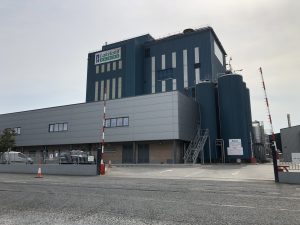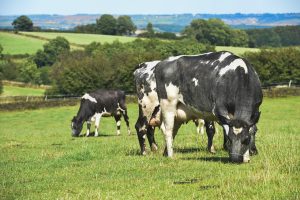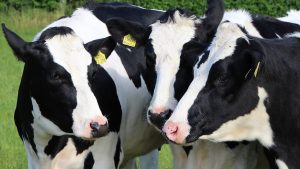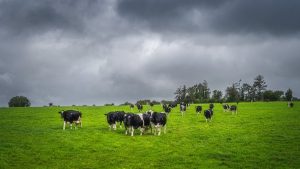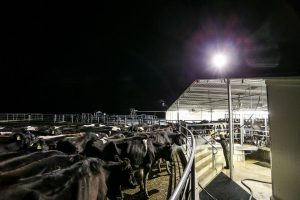
While the average family farm income (FFI) in Ireland is estimated to have increased by 20 per cent in 2021, a decline in the average income in 2022 is now highly likely, as output price increases will fail to offset the rise in production costs.
Even before Russia’s illegal invasion of Ukraine, agricultural prospects for 2022 were dominated by concerns relating to cost pressures, which began to build up over the second half of 2021. However, the war in Ukraine has led to a sharper and more widespread increase in farm input prices in 2022 than had been anticipated at the end of 2021.
Cereal and oilseed prices had been expected to rise in 2022, but the crisis means that price increases are now expected to be significantly higher than originally forecast. While this will benefit farm gate output value for cereal farmers, it will have significant adverse knock on consequences for farmers buying animal feed that is manufactured with cereals and oilseed inputs.
The rise in crude oil prices in 2022 has been dramatic and again this is, at least in part, a consequence of the crisis. This will mean that fuel prices in 2022 will average substantially higher than in 2021, perhaps by as much as 60% in the case of green diesel. Sharp increases in electricity prices have also been observed. The rise in energy prices has triggered higher inflation across a wide range of goods. Higher fuel prices and inflation in other costs, will mean that the cost of contracting will also rise considerably in 2022.
However, the greatest concern on the cost side for 2022 is the price of fertiliser. Extremely high prices for 2022 had been expected, on foot of rising European gas prices. The war in Ukraine has seen price increases accelerate further, with fertiliser prices in 2022 up in excess of 200% to 250% on their 2021 level.
Fertiliser prices and fertiliser availability continue to represent the key twin concerns for farmers this year. However, reports indicate that there are now adequate supplies of fertiliser in Ireland. It is expected that there will be some reduction in fertiliser usage as a result of the very high fertiliser price levels.
Overall, significantly higher production costs are forecast to be a feature across all sectors in 2022.
On the other side, Irish farm output prices are also on the increase. However, these increases in output prices are lagging behind the increase in production costs which have already occurred. It remains to be seen to what extent the increase in output prices will compensate farmers for the rise in their production costs. The net effect on farm incomes is likely to be sector and farm specific.
Dairy farmers seem likely to be least affected, given the extremely buoyant dairy market outlook for the coming months. In spite of the rise in production costs, farm milk prices are at unprecedented levels and it is conceivable that Irish dairy farm income in 2022 could be on a par with 2021.
However, some dairy farmers have a considerable amount of their milk in fixed priced contracts set at prices considerably below current market levels. This category of dairy farmer is now more exposed to the adverse effect which the rise in production cost will have on dairy margins and income levels in 2022.
Weather conditions over the production season could play an important role for all grassland systems as it will influence grass growth, provision of silage for next winter, the amount of purchased concentrate feed required and any impact on animal performance. The National Fodder and Food Security Committee is closely monitoring developments and is ensuring that appropriate advice is provided to farmers.
While finished cattle prices are up considerably on a year ago, this increase is unlikely to be sufficient to prevent a drop in incomes for most cattle farms in 2022. Beef production is forecast to be higher in 2022 relative to 2021 and will contribute to rising output value on cattle finishing farms. Prices for young beef cattle are expected to increase to a lesser extent relative to prices for finished cattle, or older store cattle in the marts. As a result of rising input costs, the average cattle rearing farm is forecast to experience a significant drop in farm income.
A minority of cattle finishing farms may be able to maintain their margins and incomes at 2021 levels owing to the fact that the ratio of inputs to outputs are lower on these farms relative to most cattle farms. However, this is contingent on beef prices remaining at current levels or increasing over the remainder of the year. Declines in farm income are forecast for other cattle farms. For individual farm businesses, the timing of cattle marketing will be particularly important in 2022.
Similarly, in spite of higher than anticipated lamb prices which will result in increased output value, sheep farms face a decrease in income in 2022 due to increased costs of production. Tight global markets for sheep meat and export demand for Irish sheep are forecast to support Irish lamb at close to current price levels for the remainder of the year. The Sheep Welfare Scheme payment in 2022 will continue to support margins on sheep farms.
The outlook for input expenditure in 2022, from the perspective of Irish sheep farmers, is less positive than in 2021 with prices of the key inputs to sheep production forecast to increase substantially. Usage volumes for most sheep farm inputs in 2022 are forecast to remain relatively unchanged (on a per hectare basis), but owing to the large forecast increase in fertiliser prices, fertiliser volume usage will decline. Overall, pasture and forage costs on farms with lamb enterprises are forecast to increase substantially in 2022.
The outcome for tillage farms in 2022, will likely see a fall in income, but as always, weather conditions and their effect on yields will exert a strong influence on the bottom line. Assuming average yields are achieved at harvest 2022, the cost price pressure at farm level will more than outweigh any increase in cereal prices attained at harvest. At this stage in the production year, it looks like income levels on specialist tillage farms will be down by about 25 percent compared to 2021. Whilst the Tillage Incentive Scheme (TIS) is likely to boost output value in certain circumstances, the impact on income levels on specialist tillage farms is uncertain at this stage in the production year.
The greatest challenges at present are undoubtedly being faced by Ireland’s pig farmers, with the average pig farm losing an estimated €166,000 since the year began. There have been some pig price increases in recent weeks. However, to date Irish pig prices have not risen to offset the substantial increase in pig production costs, which primarily relates to high feed and energy prices. While a rise in pig prices is anticipated over the coming months, pig farmers will continue to lose money in the meantime. The Irish sow herd has already begun culling 10,000 sows, with a further 12,000 sows deemed at high risk of destocking over the coming weeks.




